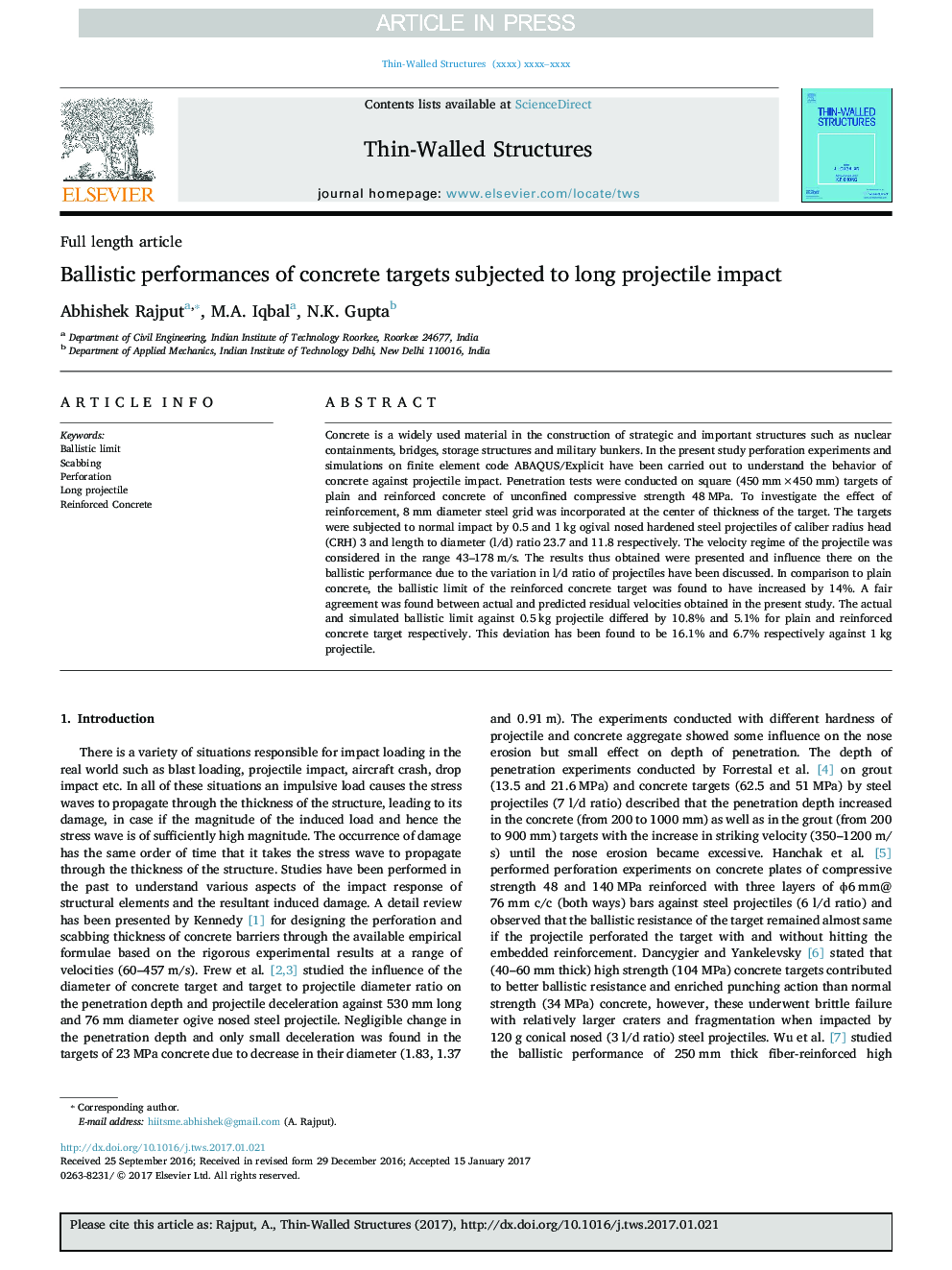| Article ID | Journal | Published Year | Pages | File Type |
|---|---|---|---|---|
| 6777923 | Thin-Walled Structures | 2018 | 11 Pages |
Abstract
Concrete is a widely used material in the construction of strategic and important structures such as nuclear containments, bridges, storage structures and military bunkers. In the present study perforation experiments and simulations on finite element code ABAQUS/Explicit have been carried out to understand the behavior of concrete against projectile impact. Penetration tests were conducted on square (450Â mmÃ450Â mm) targets of plain and reinforced concrete of unconfined compressive strength 48Â MPa. To investigate the effect of reinforcement, 8Â mm diameter steel grid was incorporated at the center of thickness of the target. The targets were subjected to normal impact by 0.5 and 1Â kg ogival nosed hardened steel projectiles of caliber radius head (CRH) 3 and length to diameter (l/d) ratio 23.7 and 11.8 respectively. The velocity regime of the projectile was considered in the range 43-178Â m/s. The results thus obtained were presented and influence there on the ballistic performance due to the variation in l/d ratio of projectiles have been discussed. In comparison to plain concrete, the ballistic limit of the reinforced concrete target was found to have increased by 14%. A fair agreement was found between actual and predicted residual velocities obtained in the present study. The actual and simulated ballistic limit against 0.5Â kg projectile differed by 10.8% and 5.1% for plain and reinforced concrete target respectively. This deviation has been found to be 16.1% and 6.7% respectively against 1Â kg projectile.
Related Topics
Physical Sciences and Engineering
Engineering
Civil and Structural Engineering
Authors
Abhishek Rajput, M.A. Iqbal, N.K. Gupta,
